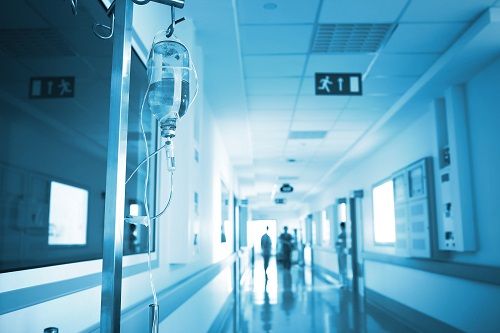Prone Position Could Allow Ventilation Without Intubation for COVID-19
Two patient case series suggest pronation could improve oxygenation with non-invasive ventilation in some patients with coronavirus.

Patients receiving noninvasive respiratory support for coronavirus 2019 (COVID-19) could benefit from being placed in a prone position and possibly avoid necessary invasive ventilation, according to patient case series reports from Italy and France in a recent issue of JAMA.
Chiara Sartini, MD, of the Department of Anesthesia and Intensive Care at the IRCCS San Raffaele Scientific Institute in Milan, and colleagues conducted a one-day cross-sectional before-after study with 15 patients with mild and moderate respiratory distress associated with COVID-19 who were experiencing inadequate response to noninvasive ventilation.
"Pronation can recruit dorsal lung regions and drain airway secretions, improving gas exchange," Sartini and colleagues explained.
Each patient was placed in prone position while continuing noninvasive ventilation, with discontinuation if the position was not tolerated or there was no improvement within the first hour. The 15 patients received a median of 2 sessions of 3 hours.
Respiratory parameters were measured at baseline, after pronation, and in follow-up in 14 days.
Sartini and colleagues reported that, compared with baseline, all patients had a reduction in respiratory rate during and after pronation (P <.001 for both). Twelve patients (80%) had an improvement in SpO2 and PaO2, 2 (13.3%) had the same value and 1 (6.7%) worsened.
On a 10-point numerical scale of comfort, 11 patients (73.3%) reported improvement during pronation compared to baseline, and 4 (26.7%) had the same value.
After pronation, 13 patients (86.7%) reported improved comfort and 2 (13.3%) had the same value.
Sartini and colleagues acknowledged that the small patient series could not determine whether intubation was avoided or delayed, but concluded that the procedure was feasible to implement and helpful in this cohort.
Xavier Elharrar, MD, of the Pays d'Aix Hospital Center in France, and colleagues reported on a before-after study of prone positioning with 24 patients with COVID-19 and acute hypoxemic respiratory failure and infiltrates on chest computed tomography.
Arterial blood gases were obtained at baseline, during prone positioning and 6-12 hours after returning to supine position; and follow-up was conducted in 10 days.
Beneficial response to the positioning was defined as ≥20% increased PaO2 over baseline. Although 4 of the patients were unable to tolerate the position for more than 1 hour, and these later required intubation, 6 of the 15 patients (40%) who remained in the prone position for 3 hours or more were deemed to benefit. Three of these patients maintained their increased oxygenation level, and 3 returned to baseline levels after supination.
"A trial of prone positioning may be a mechanism to select patients who will do well or it may be useful in a subset," Elharrar and colleagues wrote.
In an accompanying editorial, Irene Telias, MD, Keenan Research Center, Li Ka Shing Knowledge Institute, St Michael's Hospital in Toronto and colleagues suggested that several conclusions can be cautiously drawn from the 2 patient case series reports, noting that the findings can not necessarily be generalized to different populations.
They point out that many, but not all patients tolerate the prone position. Among patients who do tolerate the positioning, improvement in oxygenation and decrease in respiratory rate can occur. They also note, however, that the effect appears to be transient.
"The prone position during spontaneous and assisted breathing in patients with acute hypoxemic respiratory failure may become a therapeutic intervention in the near future," Telias and colleagues wrote, adding, "tolerance is sometimes a limitation of the technique, the physiological effects are not clarified, and the benefits of very short sessions may be questionable."

















